In Vientiane, life flows gently and slowly, like a soft melody. As the sun sinks, the city’s streets grow tranquil. Locals finish their day, shops close early, and the city returns to stillness.
Yet, amid this quiet calm, a place bursts to life each night. Along the Mekong Riverbank, the Vientiane Night Market glows under countless lights, alive with laughter, sizzling grills and fragrant aromas filling every lane. The smell of grilled skewers, spicy sausages and rich seasonings mingles with charcoal smoke to form the unique flavor of the Lao’ street food.
From humble market to iconic street-food destination in Vientiane
The night market in Vientiane lies along the Mekong River. It began in the early 2000s as a handful of small street-food stalls. At first it served the local residents; today it has become a beloved gathering place for both the city’s people and visiting travelers.
Not very large nor overly bustling, the market still holds visitors captive with its rustic charm and welcoming atmosphere. Neat rows of stalls, warm golden lights reflecting off glowing charcoal, smoke curling up from grills with lemongrass, garlic and cooking meat — the air is saturated with scent. Typical Lao dishes can be found at almost every stall: grilled skewers (ping kai), Lao sausages (sai oua), grilled fish (ping pa) and crispy fried grasshoppers (maeng kai thot)...
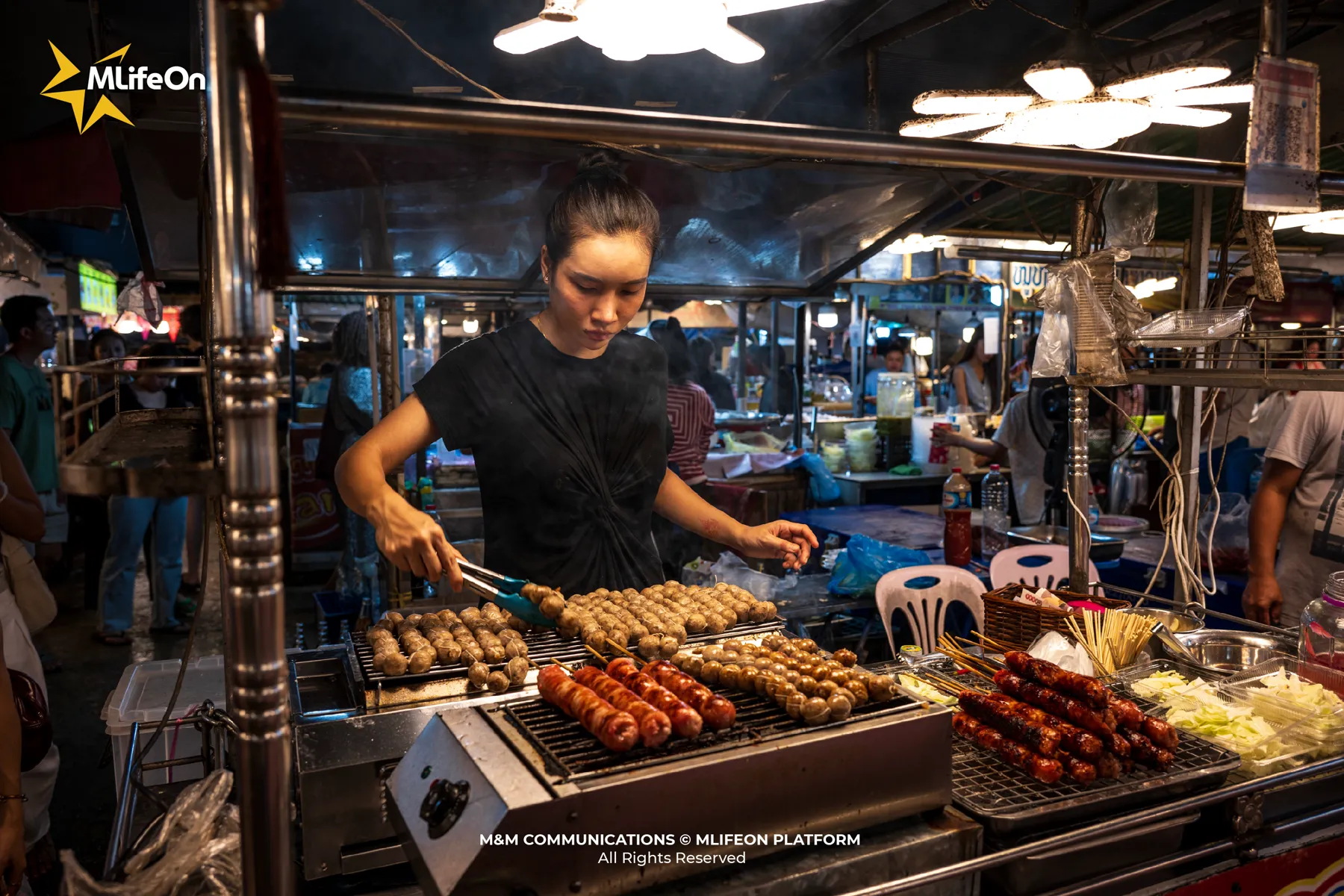
Lao cuisine may not be elaborate in its presentation, but it emphasizes depth in flavor. Among salty, sweet, sour and mildly spicy notes, one can sense how Lao people find natural balance in each dish. Perhaps this is what gives Lao food its familiar, sincere and unforgettable character.
Telling a story of Laos Street Food
The energy of the night market peaks around the food stalls. Skewers are flipped in unison over hot grills, fat sizzling with each turn, the scent of lemongrass, garlic, chili and fermented fish sauce (pa-dek) swirling in the air.
Lao sausage (Sai Oua, also called Sai Gok) leaves a strong first impression. Minced pork is mixed with lemongrass, kaffir lime leaf, chili and galangal, grilled until the casing is taut and fragrant. Vendors serve it with slices of ginger, garlic and fresh chili — the crisp casing gives way to soft, juicy filling and the fiery flavor spreads across the tongue.
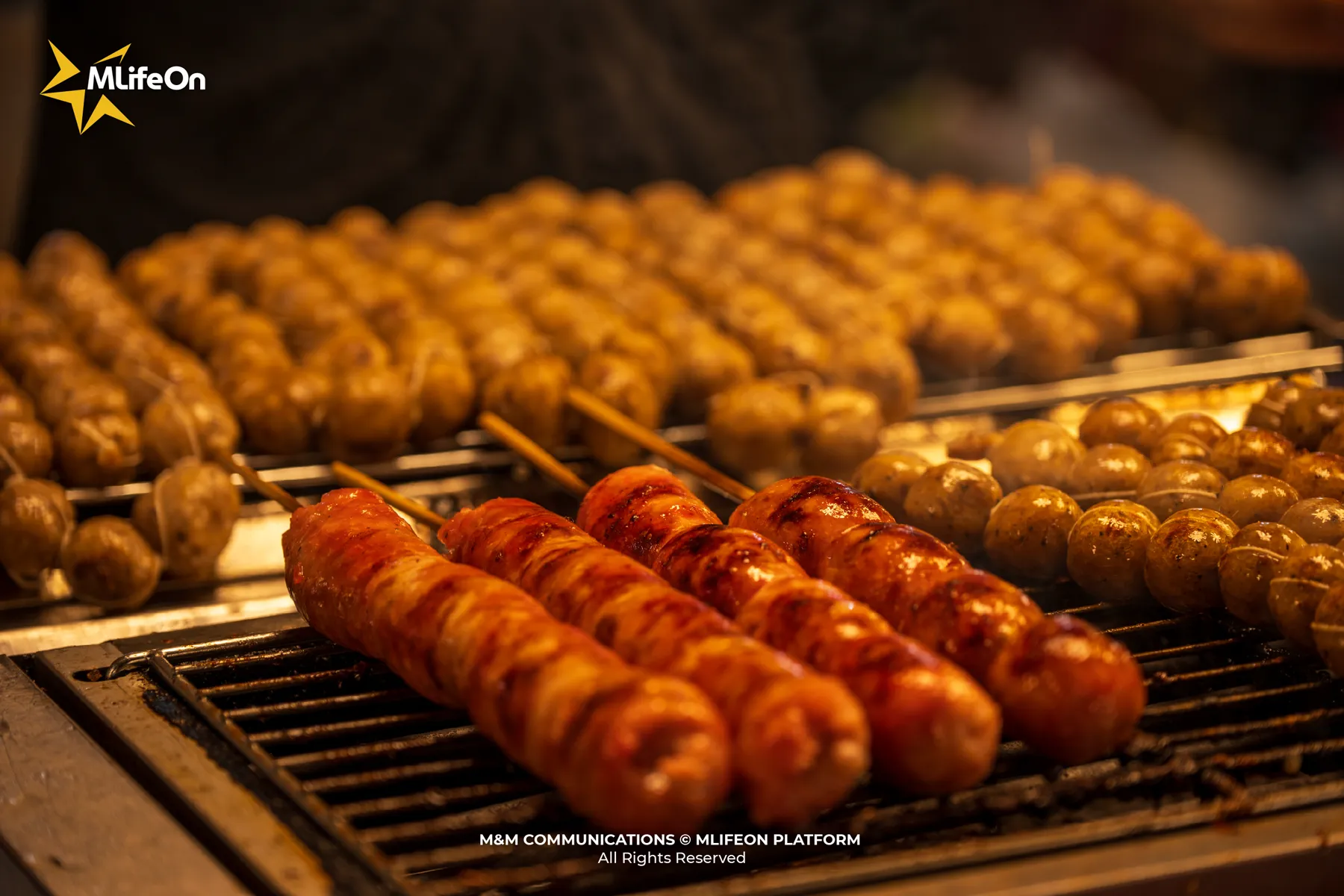
Beside it, Lao-style stir-fried noodles (Pha phaen) exude a tempting aroma. On banana-leaf lined baskets, golden noodles are stir-fried with pork, leafy greens and carrot, then coated in a thick reddish-brown sauce. During the final flip the cook drizzles Lao fish sauce, chili powder and sugar to balance the flavor. A seemingly simple dish, yet loved for the interplay of mild heat, balanced salty-sweet and the fragrance of native herbs.
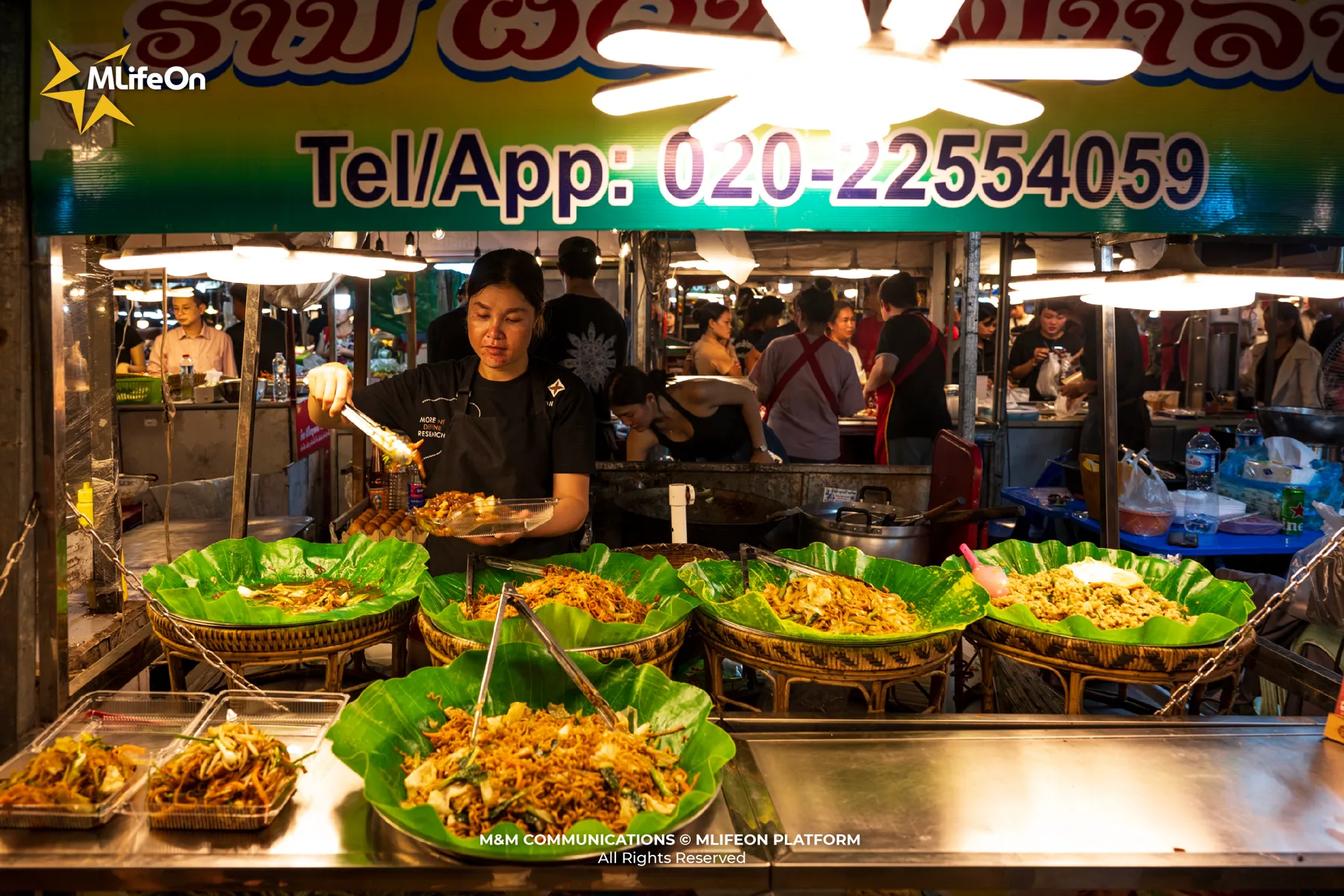
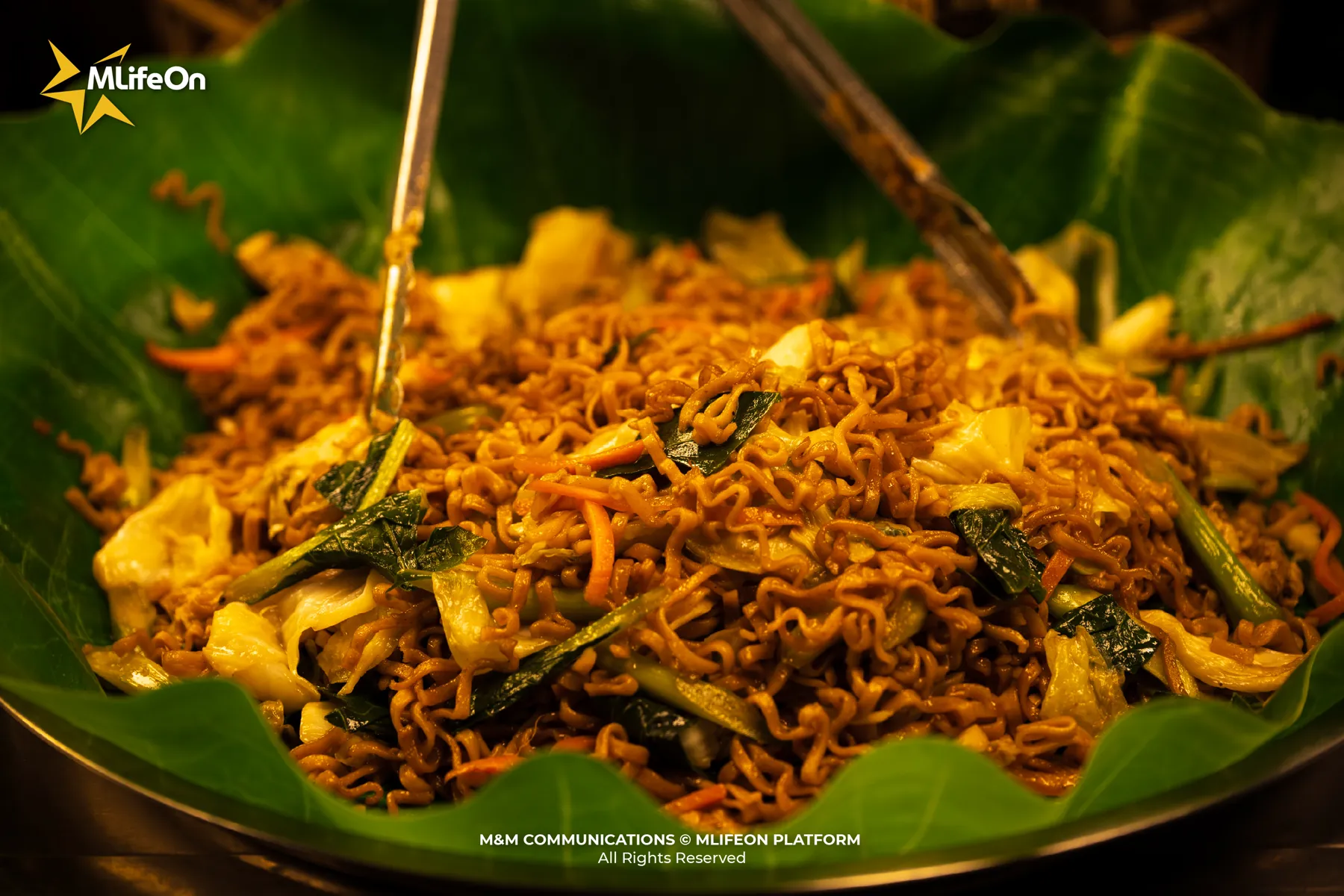
A cannot-miss dish is Savanakhet grilled chicken (Ping Kai Savanakhet). Typically using free-range chicken, the meat is firm and aromatic. Marinated with lemongrass, garlic, pepper, fish sauce and a touch of palm-sugar syrup, the bird is clamped between two bamboo poles and turned slowly over glowing coals until the skin is golden and fragrant. A bite delivers smoky sweetness, firm yet tender texture and a slightly fatty finish that lingers.
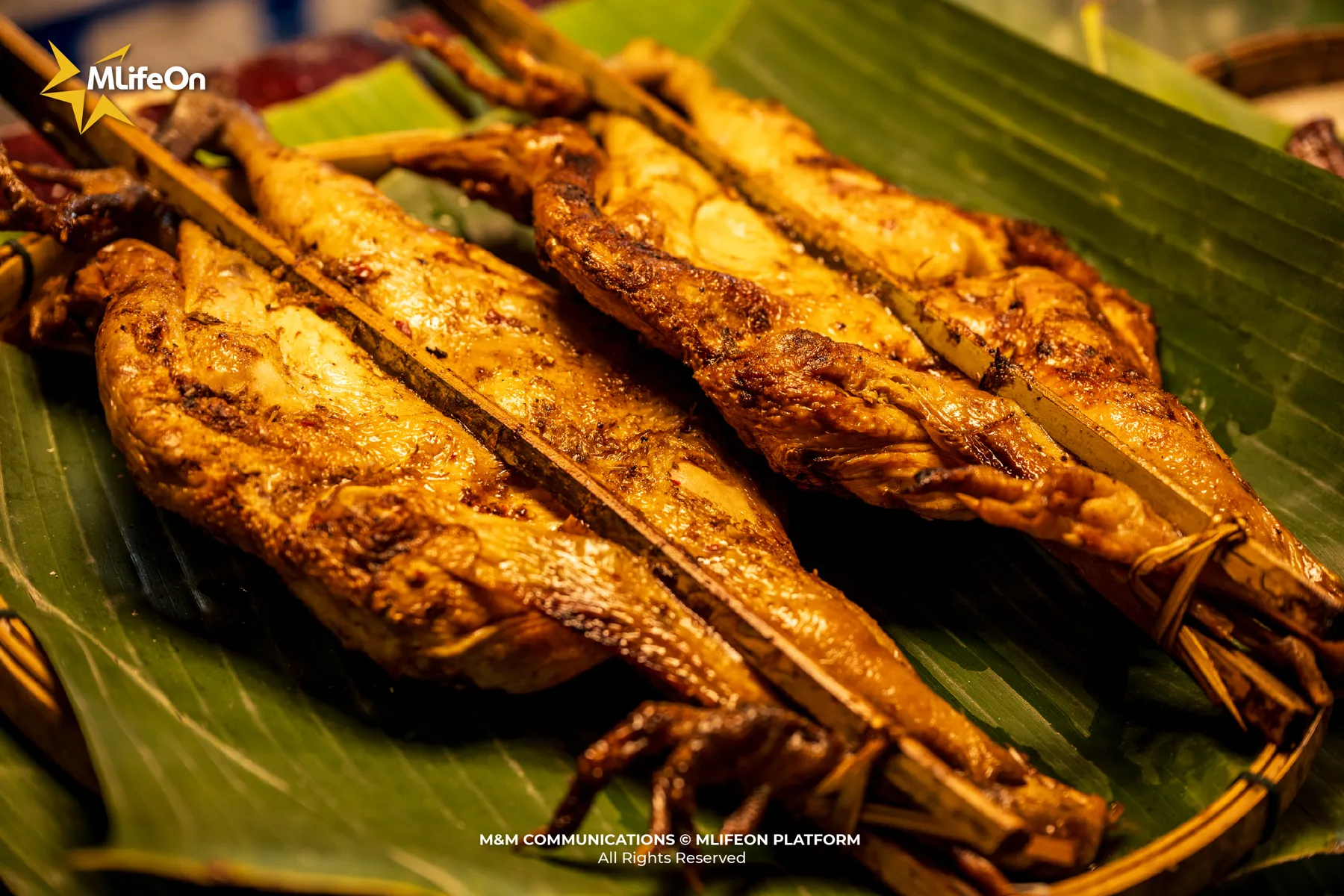
And of course the grilled skewer (Ping Sin) fills the market’s air with scent. Vendors continuously spin skewers over flame, sometimes tossing them as flare-ups ignite, making the stall momentarily blaze. Each skewer is marinated with lemongrass, garlic, chili, sesame seeds and pa-dek, grilled just right to retain moisture and flavor. A portion of 10 skewers costs around 35,000 Kip (~41,500 VND) — garnished with scallions, chili powder and seasoning, it’s enough to make travelers fall in love from the first bite.
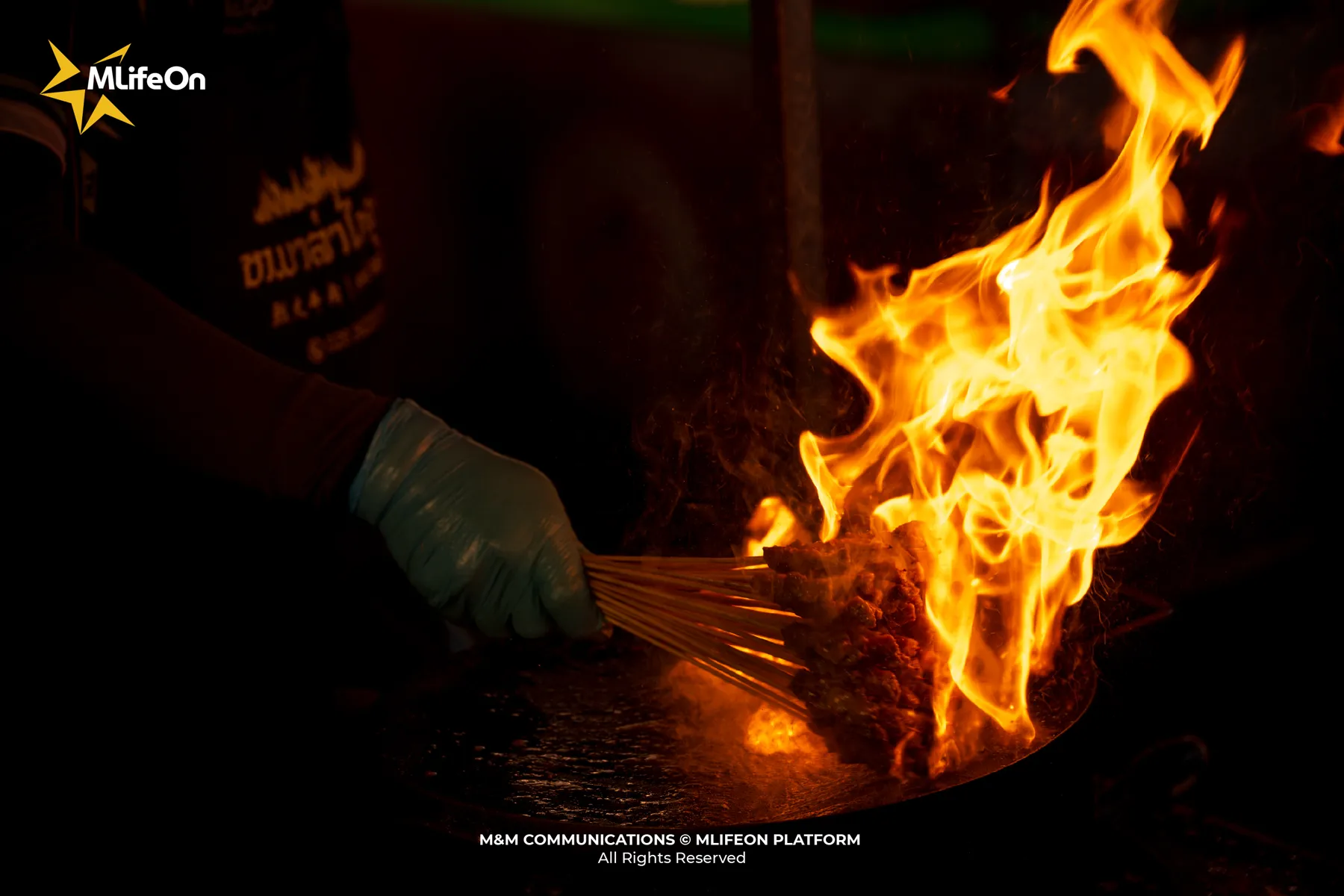
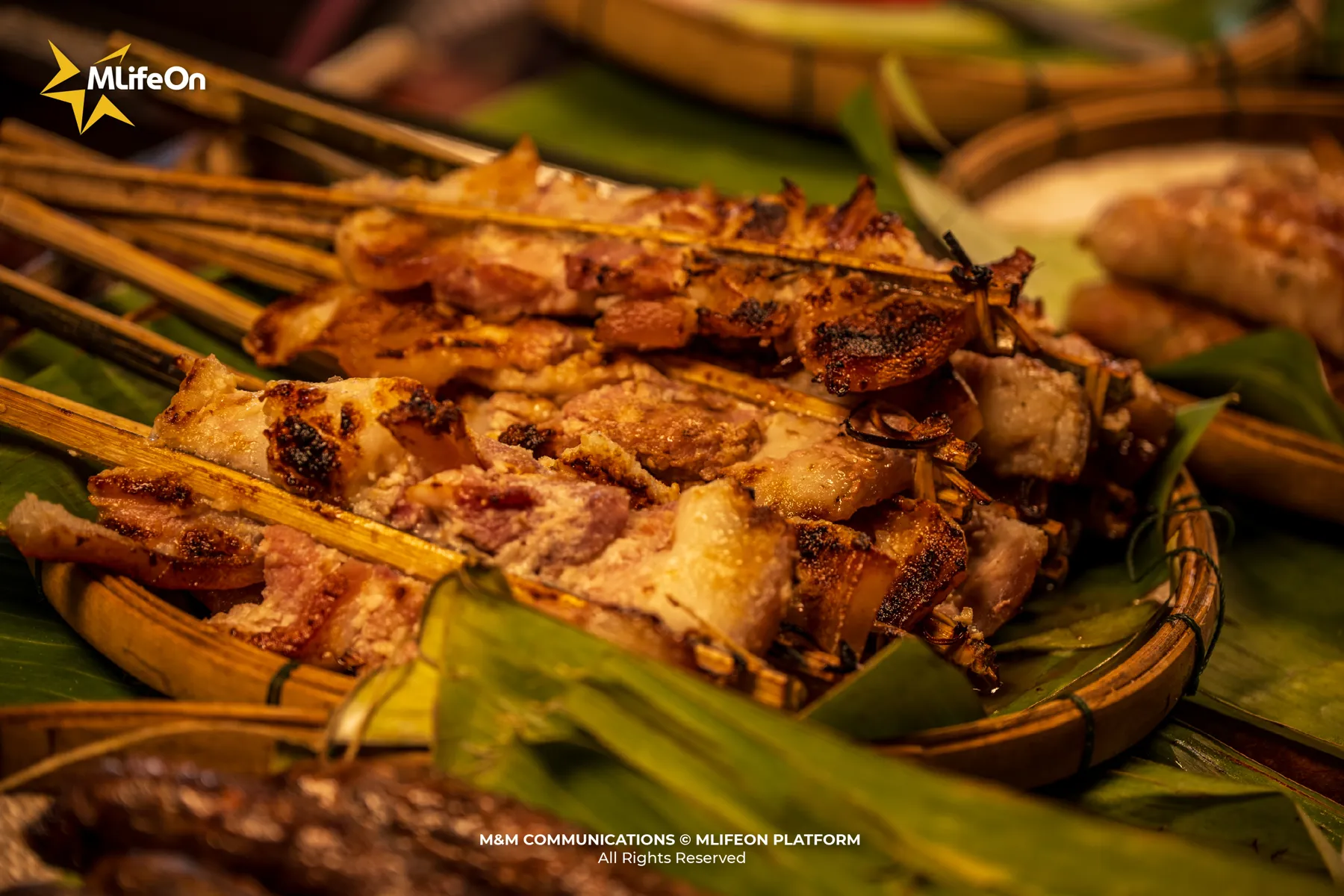
Walking through the market, travelers often stop at the curious stalls displaying trays of golden brown fried grasshoppers (Maeng Kai Thot). Cleaned and deep-fried in oil along with kaffir lime leaves and lemongrass, they deliver a crisp, rich and lightly herbal taste. While a humble snack, Maeng Kai Thot has gained popularity in Laos for its unique flavor and street-food spirit. If you visit Vientiane, be sure to try it and feel the free-spirited and authentic street-food culture of this land.
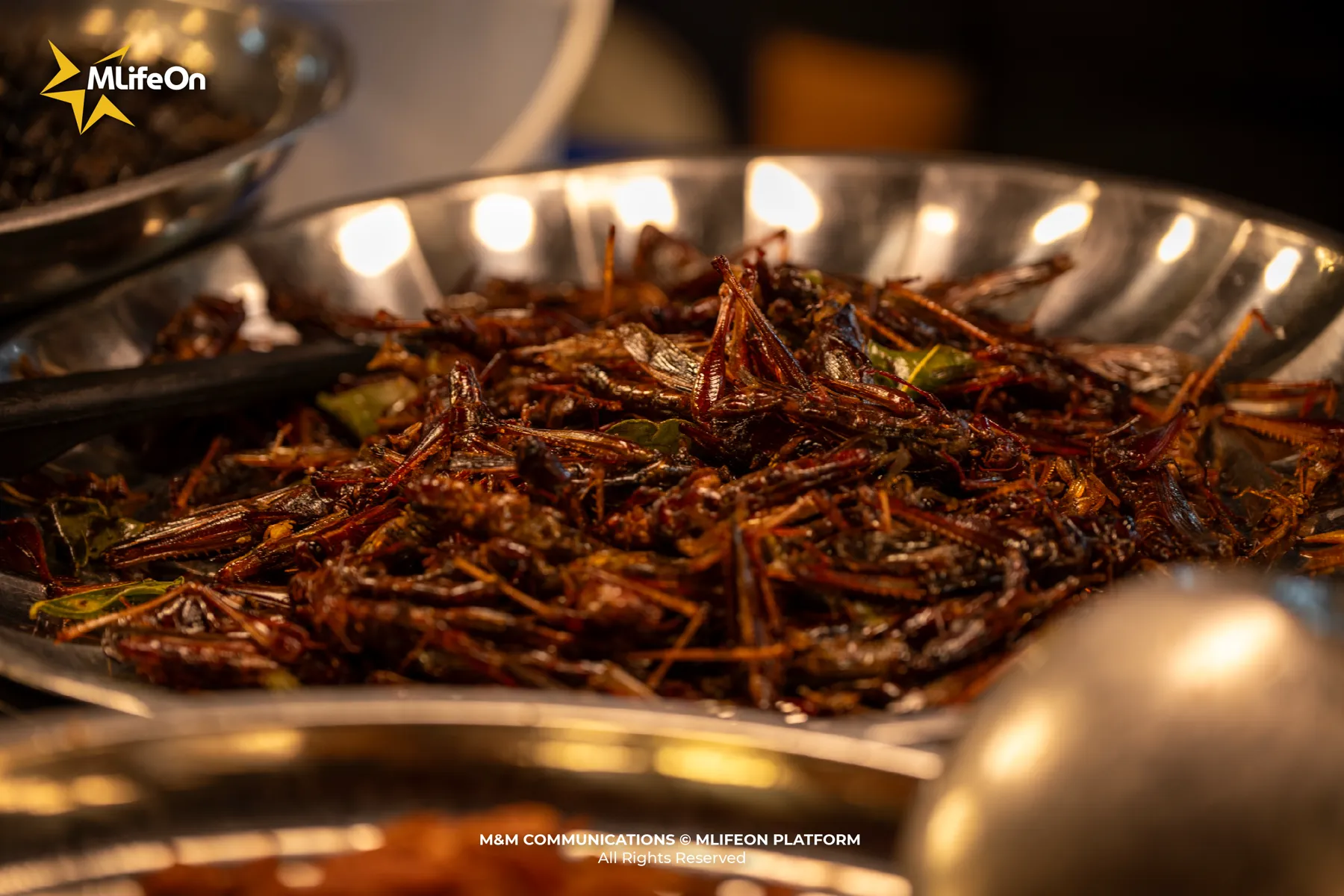
Lao cuisine is also fascinating for its use of natural herbs and local seasonings. From lemongrass, galangal, kaffir lime leaf, holy basil, coriander to dried chilis, pa-dek fish sauce and jeow bong chili paste — each dish is tied to the herb garden. Lao people believe that bold, fragrant flavors not only awaken the palate but help balance the body, making every meal warm and complete.
When food becomes a story of cultural fusion
Lao cuisine is a delicate blend of various Southeast Asian cultures, tracing its roots back to the Kingdom of Lan Xang in the 14th century. Throughout history, Laos has been influenced by Thailand, Vietnam, China, and France, each leaving its own distinct imprint on the country’s flavors. The fiery spice of Thailand, the light freshness of Vietnam, the savory depth of China, and the refined touch of French gastronomy come together in harmony, creating a cuisine that is rustic yet flavorful, vibrant yet comforting—just like the warm and generous spirit of the Lao people.
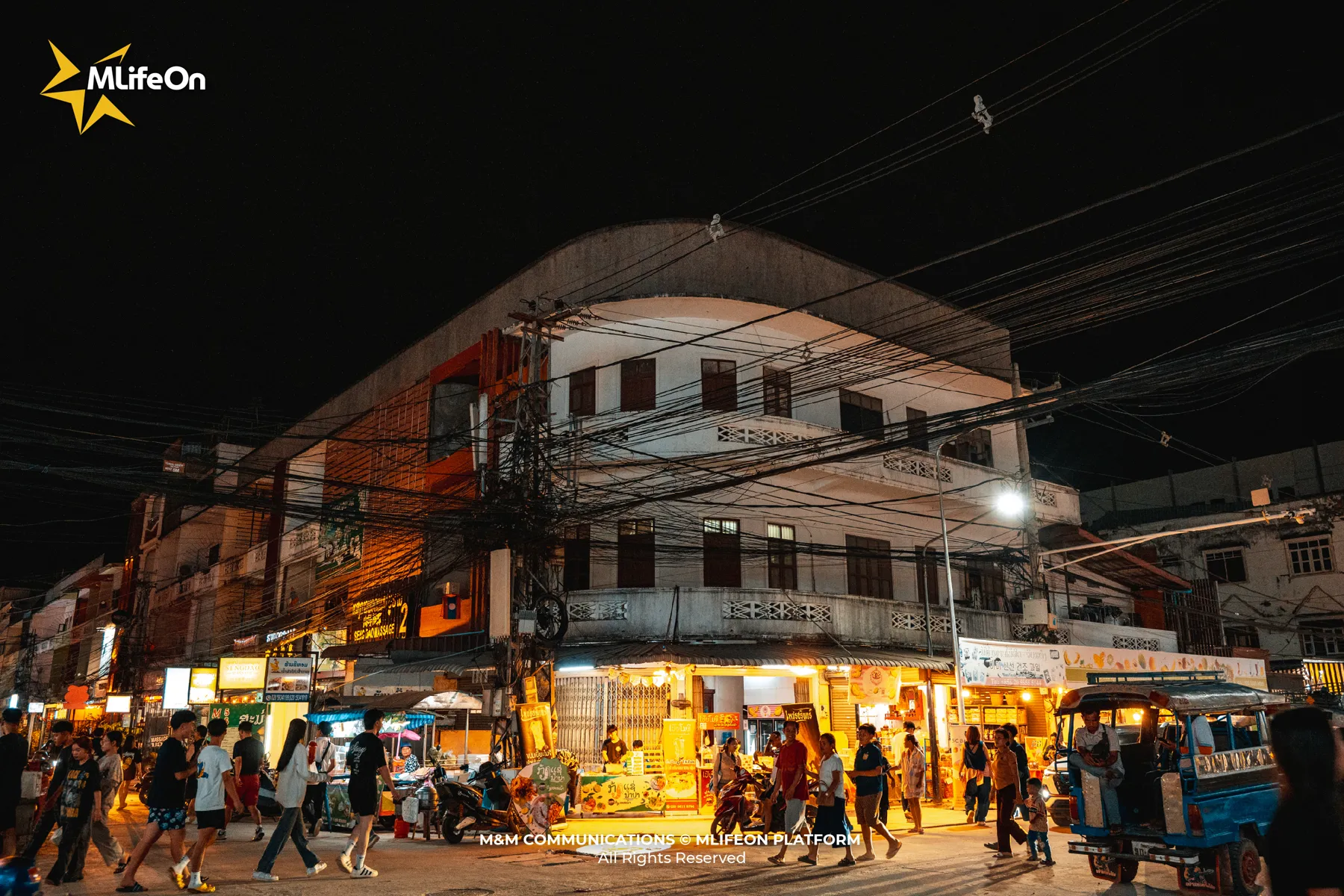
A stroll through the Vientiane night market quickly reveals this fusion. Visitors from around the world mingle with locals, chatting while savoring street-food delights. The scent of lemongrass, garlic and chili drifts in the breeze, mingled with laughter and lively music. The boundaries between guest and host fade — only the shared act of eating, the spicy flavors and the quiet joy of a riverside market remain.
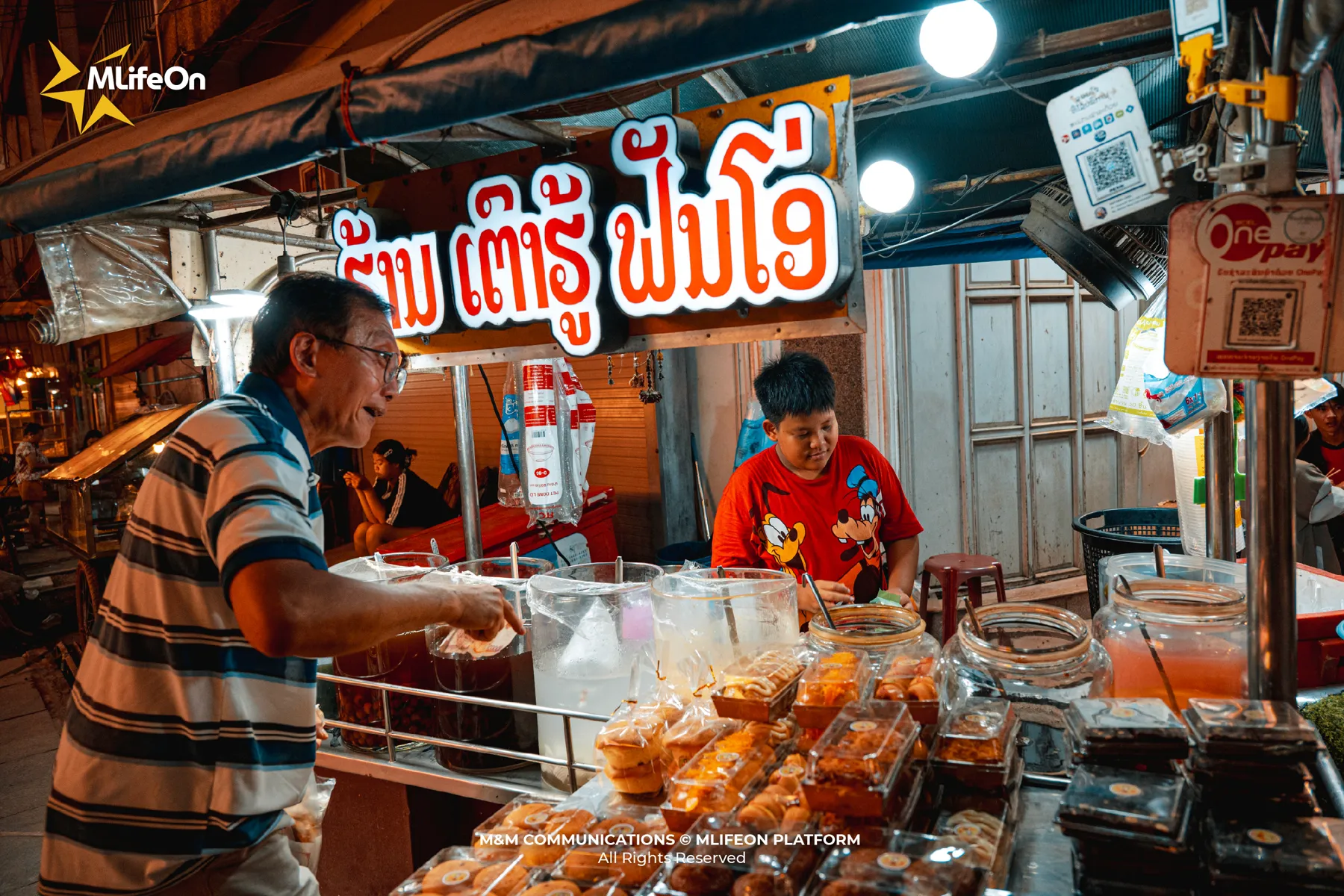
Laotians are gentle, unhurried yet warm-hearted. They pause to smile, invite you to try a skewer, or simply return your greeting with warmth. In these moments you sense their spirit: humble, hospitable and deeply valuing human connection.
Morning Rhythm - A different flavour of Vientiane
As dawn breaks, Vientiane begins a day of calm. On the sidewalks, lines of pre-cut fruit carts invite the eye with rich colours, and each piece is paired with a little envelope of house-made salt-chili mix. The salty-spicy spark makes the tropical sweetness shine.
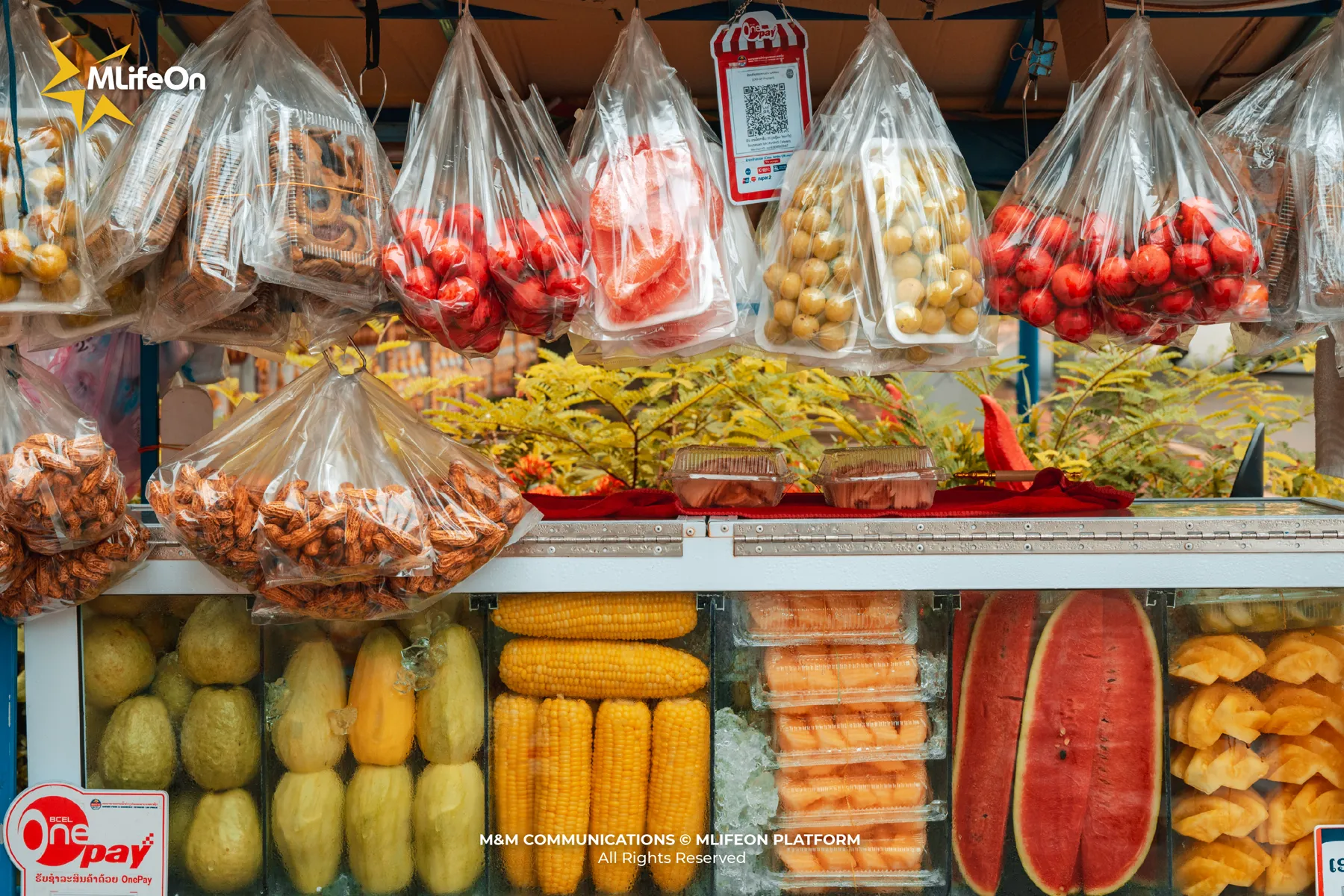
From the misty morning air emerges the gentle aroma of bamboo-steam baskets filled with banana-leaf-wrapped sticky-rice parcels (Khao Tom Mat). When opened, the steam carries the scent of banana leaf and the sweet-nutty rice inside, creating an intimate, comforting taste.
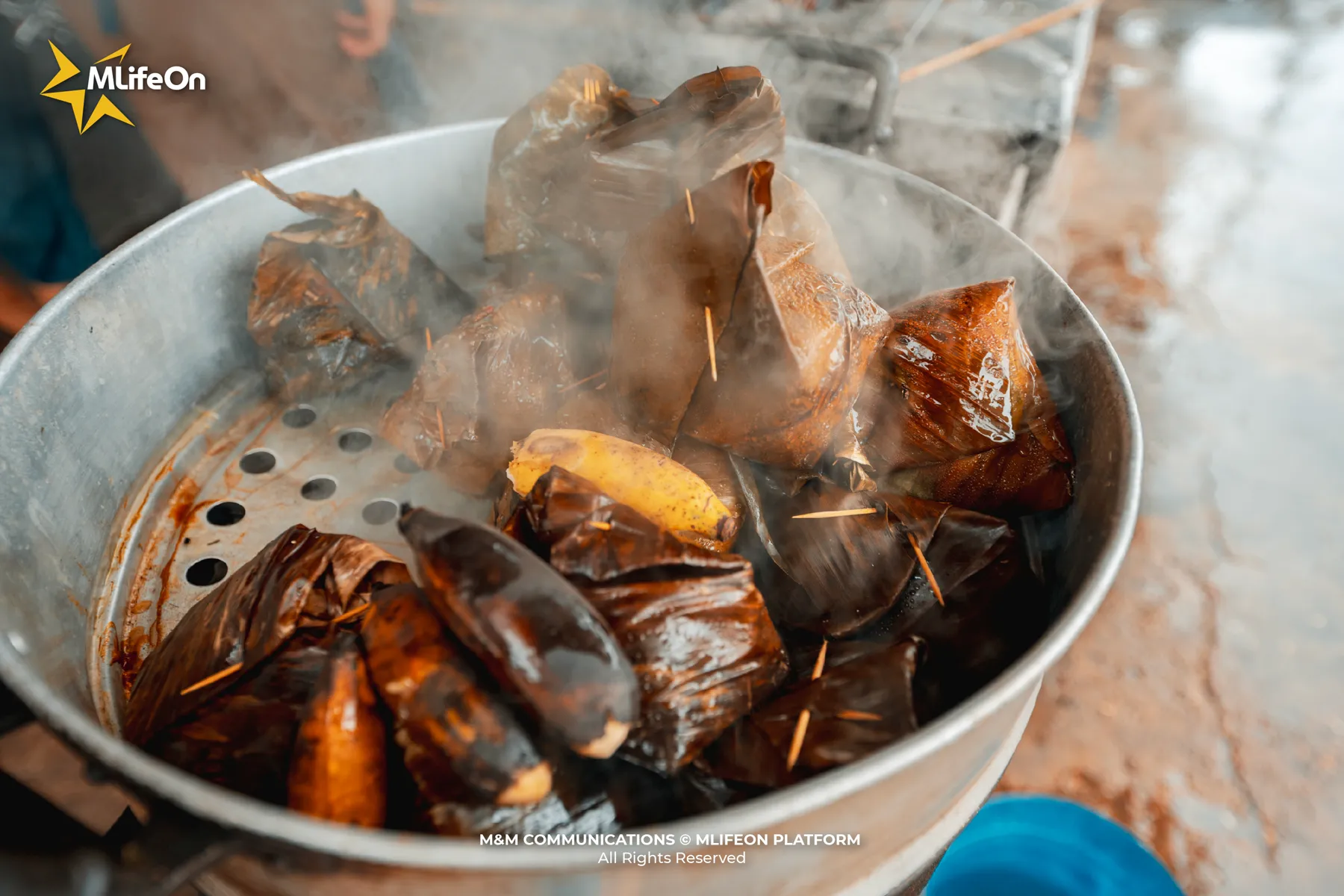
Morning in Vientiane isn’t hurried, it’s slow and peaceful — a rhythm that might remind some Vietnamese visitors of Vietnam years ago, when days began with the hum of simple street-life and warm greetings rather than rush. Here, the quiet simplicity of life and the way Laotians savour each moment reflect a style of living both humble and sincere.
Conclusion
Taking in street-food at Vientiane Night Market becomes a memorable experience — not just for bold spicy flavors, but for the down-to-earth warmth and sincerity of the Lao people. If you have the chance, visit Laos, stroll the riverside night market, sit by a small stall and enjoy a sizzling skewer, and let yourself feel the culture of this place. Imagine yourself as a local for a moment — living slowly, tasting deeply, and embracing the authentic, warm-hearted essence of Laos.
And if you love discovering stories of culture, cuisine, and people, download the MLifeOn app - your travel companion to explore, collect, and share cultural stories in your own way.
Available now on Apple Store and Google Play Store.
CREDIT:
- Photographer: Luan Nguyen
- Content: Su Vy
- Design: Trung Huynh




















